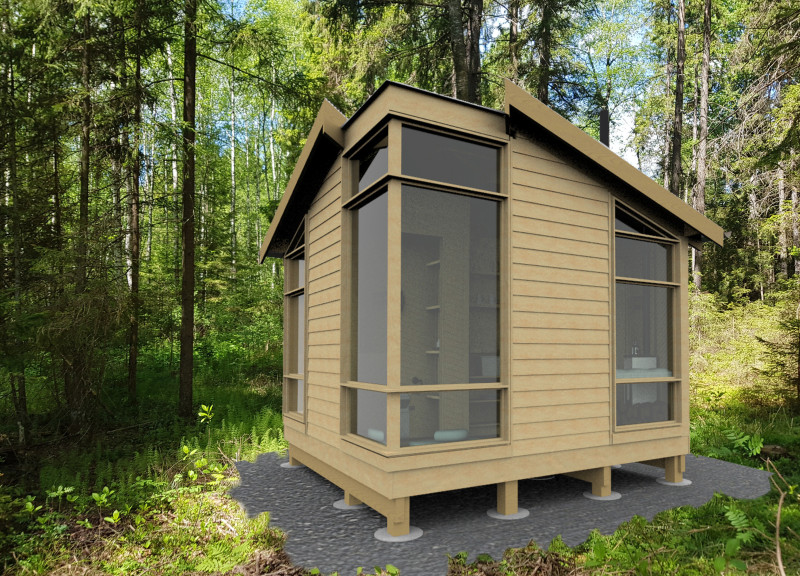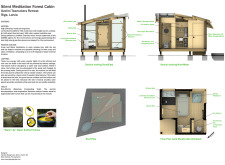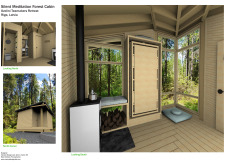5 key facts about this project
The Silent Meditation Forest Cabin at Ozolini Teamakers Retreat in Riga, Latvia, focuses on fostering clarity of mind and a closer connection to nature. Located in a serene setting, the cabin serves as a retreat for meditation and mindfulness. The design emphasizes the idea of journey, inviting users to engage in personal reflection while surrounded by the peacefulness of the forest.
Architecture and Spatial Arrangement
The cabin's layout is carefully organized into specific areas meant for observation, meditation, self-care, and activities. Each section serves a distinct purpose, allowing visitors to choose how they want to interact with the space. The heart of the cabin is flexible, accommodating practices like yoga and art, while at night, it can be transformed into a sleeping area, warmed by a stove for comfort.
Material Palette and Aesthetic
Materials play an important role in shaping the cabin's character. The exterior features rough sawn, wide plank cedar siding, which adds texture and warmth. Cedar decking, framing, and posts complement the exterior design. Inside, solid pine wood windows and doors create continuity, while the corrugated copper roofing offers durability. Standard dimension pine framing and beadboard walls further connect the inside to the immediate environment, enhancing the natural feel of the cabin.
Sustainability and Functional Systems
The cabin incorporates smart building practices to support sustainability. Cross ventilation is achieved with operable windows, allowing fresh air to flow naturally, thus maintaining a comfortable atmosphere without relying heavily on technology. The roof also includes a drainage system designed to collect rainwater, which can be used for power generation with a water turbine. This ensures the cabin operates efficiently while reducing its environmental footprint.
Final Design Detail
Approaching the cabin, visitors encounter a gravel clearing that clearly marks the entryway. This transition area invites individuals to leave behind the outside world and step into a space designed for introspection. The low, north-facing covered porch adds a sense of enclosure, helping visitors focus before entering the larger interior, where expansive views of nature await.






















































